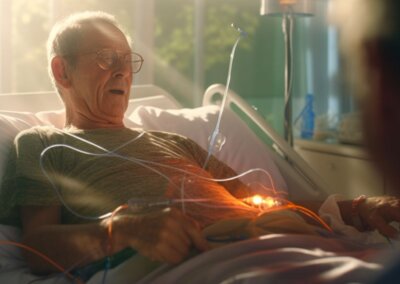The Association of Palliative Medicine (APM) has warned that the public is being “scared” into supporting assisted suicide by an excessive focus in the media on cases of suffering at end-of-life, while coverage of well-delivered palliative care is ignored.
A survey of almost 300 APM members showed that a large majority of doctors working in palliative care believe there is not enough coverage of “good deaths” in the media and that there “is a high degree of patient and family misconception of palliative care, which may be exacerbated by public discussion of assisted suicide/euthanasia”.
A survey, published last week by the Association of Palliative Medicine (APM), reveals that 87% “felt there has not been enough press coverage of good deaths”. One respondent said:
“There has been huge bias in reporting misery of deaths and less on good palliative care and good deaths”.
Another said: “I wish there would be a lot more publicity and promotion about all the positive experiences of death and dying that occur across the country… most of the time the bad ones hit the news and overshadow all the good work that’s carried out by Palliative care teams”.
Stories about negative outcomes are “scaring vulnerable patients”
Chairperson of the APM, Dr Amy Proffitt, said doctors who provide palliative care are “deeply concerned” at how “grossly misleading” some of the reports are about the quality of end-of-life care in England.
“Stories about good deaths, available treatments and how to access end-of-life care are largely sacrificed in favour of those that focus on negative outcomes, which unfortunately are scaring vulnerable patients”, she said.
“This is then compounded by failing to ask why these issues occurred. For example, was the patient able to access all the services they needed? For any clinician, this is the obvious first question, because we know that around one in four people who would benefit from palliative care do not receive it”.
Patient and family confusion about palliative care
The survey also revealed that palliative care doctors believe there is a high degree of patient and family misconception about end-of-life care. 67% of respondents said that “patients and families think they are definitely or probably practicing covert euthanasia”.
One respondent said: “Some patients confuse palliative care with euthanasia, especially when it comes to the use of injectable opioids”.
Another doctor said: “Palliative care is already equivalent to euthanasia in the [public’s] mind here – they associate syringe pumps with euthanasia and this is a myth we have to [dispel] on a daily basis when interacting with patients and their families in the hospital”.
The survey also found that while 60% of doctors in palliative care are able to have open discussions about assisted suicide and euthanasia in their clinical teams, some 10% said that “the organisation where they deliver most of their care currently does or would actively inhibit them from expressing their views on assisted suicide”.
Palliative care doctors oppose assisted suicide
A 2020 British Medical Association (BMA) survey showed that 84% of doctors in palliative medicine would not be willing to perform euthanasia on a patient should the law ever change.
The APM survey came out at the same time as an amendment to the Government’s Health and Care Bill that sought to force the Government into drafting anassisted suicide bill within a year of the Health and Care Bill becoming law.
On Wednesday evening, Lord Forsyth’s assisted suicide amendment was not taken to a vote, but it is possible that the amendment will be debated again at Report Stage of the Bill.
Right To Life UK spokesperson, Catherine Robinson, said: “The presentation of this debate in the media is especially important as it is so easy for the public to get the wrong idea about what palliative care actually involves. The point is not to end the life of the patient, as in assisted suicide and euthanasia, but to manage their symptoms to the greatest degree possible and to ensure the patient has as positive and dignified experience of death and dying as possible”.
“Equally, an excessive focus on bad deaths and suffering at the end of life can lead to the perception that there is no hope and create the false choice between a painful, drawn-out and unnecessarily unpleasant death and an assisted suicide or euthanasia. But this is not the case at all. Good palliative care is, or should be, an option for all of us at the end of our lives”.












